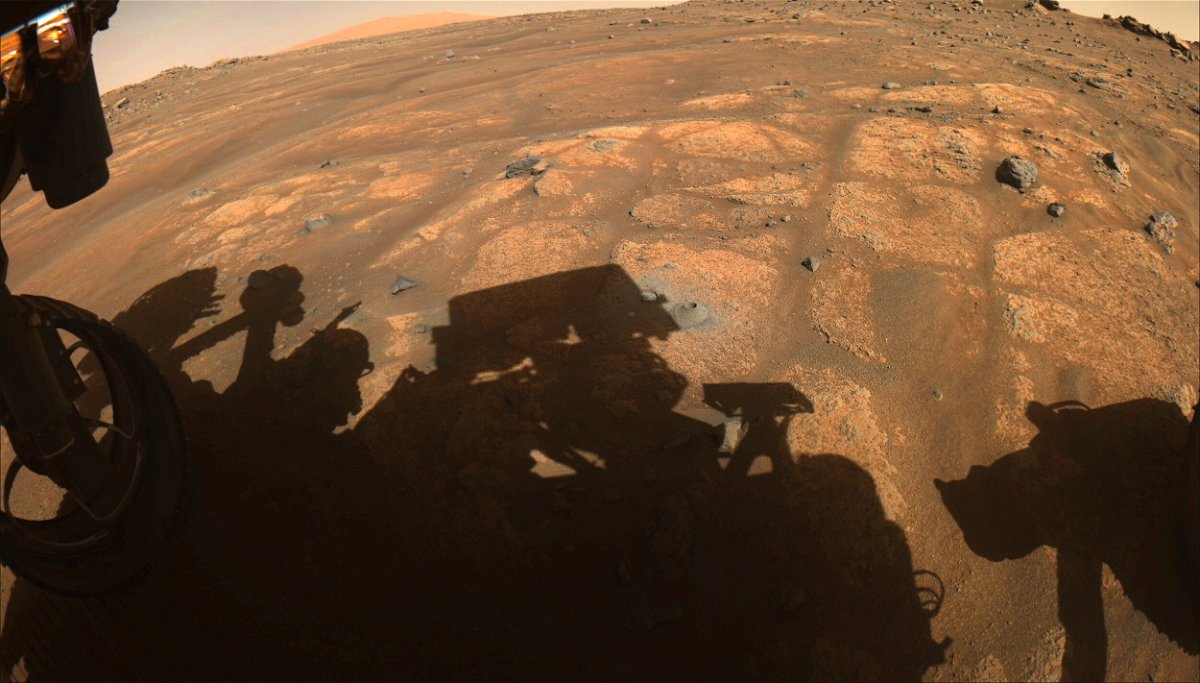Perseverance rover’s first attempt to collect Martian sample didn’t go as planned

The Perseverance rover attempted to make history and collect its first sample of the red planet
By Ashley Strickland, CNN
Attempting firsts on Mars is hard, even if you’re an incredibly capable and advanced robot like the Perseverance rover.
The rover attempted to make history on Friday and collect its first sample of the red planet, but data returned to Earth by Perseverance showed that no rock was collected during its attempt.
Perseverance’s task was to drill down into a rock at the rover’s current parking spot, collect a sample and safely seal it inside a tube.
There are 43 titanium tubes aboard the rover, about 35 of which will be returned to Earth by future missions with precious samples from Jezero Crater — the site where an ancient lake and river delta existed billions of years ago — sealed inside.
“While this is not the ‘hole-in-one’ we hoped for, there is always risk with breaking new ground,” said Thomas Zurbuchen, associate administrator of NASA’s Science Mission Directorate, in a statement. “I’m confident we have the right team working this, and we will persevere toward a solution to ensure future success.”
Perseverance has a system to obtain and store samples that uses a hollow coring bit as well as a percussive drill. These are on the end of the rover’s 7-foot-long (2-meter-long) robotic arm.
Based on data sent back by the rover to its teams on Earth, the drill and bit were used as planned during the first sample collection attempt. The sample tube was also processed.
“The sampling process is autonomous from beginning to end,” said Jessica Samuels, the rover’s surface mission manager at NASA’s Jet Propulsion Laboratory in Pasadena, California, in a statement. “One of the steps that occurs after placing a probe into the collection tube is to measure the volume of the sample. The probe did not encounter the expected resistance that would be there if a sample were inside the tube.”
The rover’s teams on Earth are going to analyze the data to figure out what went wrong. This is not an issue that was ever encountered while using the sampling system on Earth during testing ahead of launch.
The team will use the rover’s Wide Angle Topographic Sensor for Operations and eNgineering imager, called WATSON, on the end of the robotic arm to take photos of the sampling hole.
These images could help the team piece together what happened and then schedule the next sample collection attempt.
“The initial thinking is that the empty tube is more likely a result of the rock target not reacting the way we expected during coring, and less likely a hardware issue with the Sampling and Caching System,” said Jennifer Trosper, project manager for Perseverance at JPL, in a statement. “Over the next few days, the team will be spending more time analyzing the data we have, and also acquiring some additional diagnostic data to support understanding the root cause for the empty tube.”
Sticky soil and unpredictable rocks have posed challenges to other robotic missions exploring Mars, like Curiosity trying to drill into rocks that provided more resistance than expected and the InSight lander’s heat probe being unable to push deep beneath the Martian surface.
“I have been on every Mars rover mission since the beginning, and this planet is always teaching us what we don’t know about it,” Trosper said. “One thing I’ve found is, it’s not unusual to have complications during complex, first-time activities.”
Perseverance is currently stationed within the deepest and oldest layers of Jezero Crater, an area of exposed bedrock called the “Crater Floor Fractured Rough.”
Nearby is “Séítah,” which means “amidst the sand” in the Navajo language. This Martian bedrock also boasts intriguing ridges, layered rocks and tricky sand dunes.
The Ingenuity helicopter has been acting as an aerial scout of the Séítah site, taking images to look at areas of interest as well as hazards to the rover in case the team wants to explore it.
Once the rover is able to successfully investigate its current home and collects about eight samples, it will travel to the crater’s delta region where a river once emptied into the lake. This is where scientists are eager to see whether fossilized evidence of ancient life can be found.
The-CNN-Wire
™ & © 2021 Cable News Network, Inc., a WarnerMedia Company. All rights reserved.